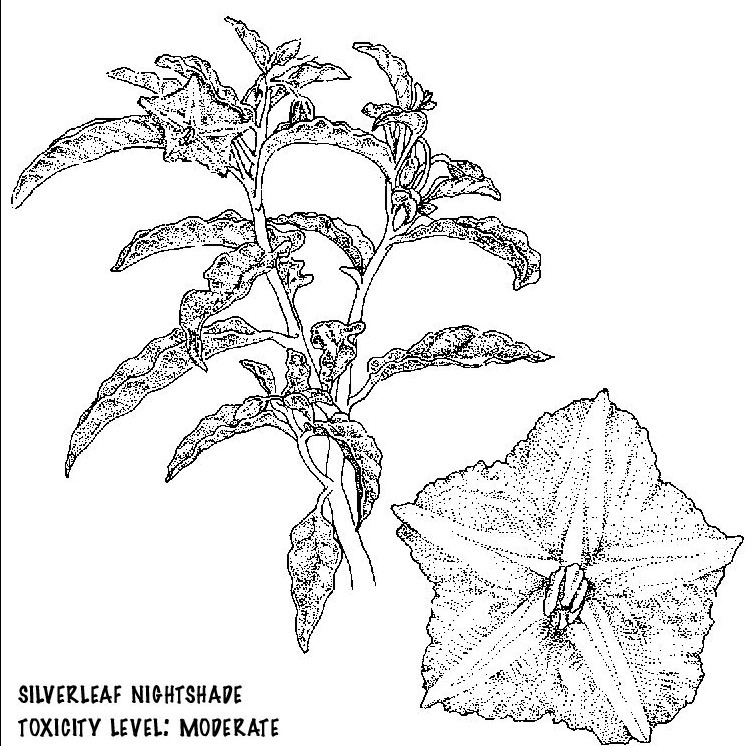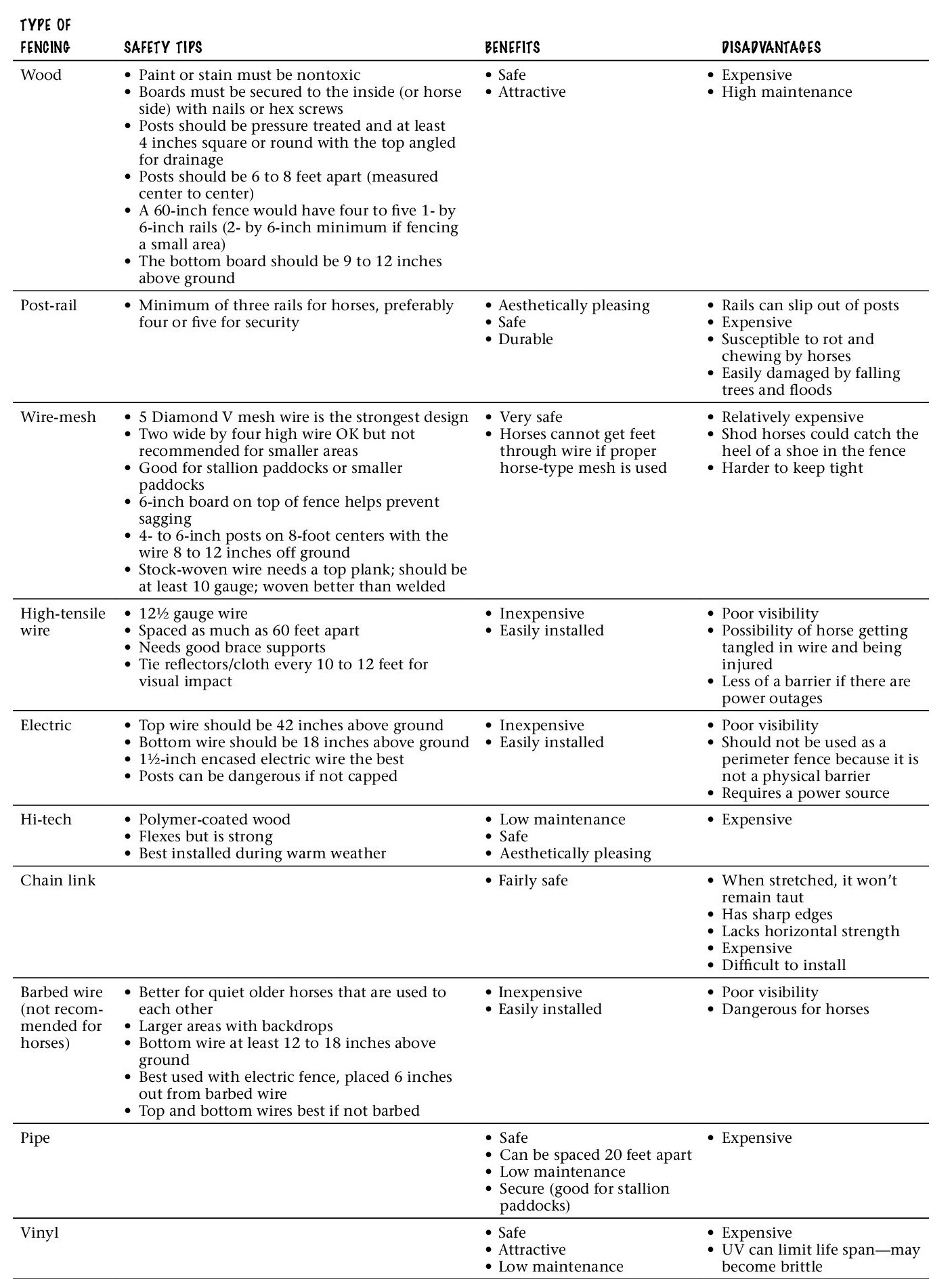Pasture Management
Pastures are grazing areas of 2 or more acres. If you maintain your pasture well, you’ll greatly reduce the amount of hay needed to supplement your horse’s diet. Plant hardy varieties of grass that grow well in your area.
Nothing contributes more to good pasture than controlled grazing. It’s ideal to divide pastures into sections so you can rotate grazing from one part to another. The best grass length for grazing is 6 to 8 inches. Take horses off the pasture or move them to a different section when grass is 3 to 4 inches tall. This keeps the grass healthy and productive. It also helps control parasites. Horses grazing on taller forage are less likely to ingest larvae, because the larvae usually live in the lower couple of inches of grass.
Leave pasture free to grow back for about 3 weeks. During this time, drag the pasture to break up manure piles so parasite larvae will be killed by exposure to the sun. This also helps speed up composting. Mow or clip places where the grass is too long. While your horse is off the pasture, supplement its diet with hay, if necessary.
Keep brush, coarse grass, and weeds— especially poisonous tansy ragwort—pulled, cut, or sprayed to leave room for forage. In some areas, yellow starthistle and poison hemlock may be problems. Also, inspect your pastures for hazards such as rodent holes, glass, and sharp sticks.
During winter months or when soil is wet, limit horses’ access to pastures to avoid compaction of soil and damage to roots by trampling. Use turnout areas during this time.
Do what you can to improve soil fertility.
Have a soil test done regularly, and apply amendments as needed. Fertilize in the spring, and irrigate if possible. In the fall, you can use composted stall manure as fertilizer, but be sure to use a good deworming program.
If a pasture has a stream or pond, limit horses’ access to the water to avoid contamin- ation and destruction of vegetation. Use trees and hedges already growing along banks, plant “living fences,” or put up fences to help restrict the horse’s access. If a stream is your water source, build a ramp to limit damage to the bank. When possible, an nate drinking source using gravity flow or pumping water to fill a remote watering tank.


Round Pens
Arenas and round pens are places where you can ride or exercise your horse. A round pen is highly useful for training and longeing, as well as providing a place to turn a horse out. A 60-foot diameter is a good size, although it can be as small as 35 feet depending on its main use. A round pen should have walls 6 feet high and all-weather footing.
The size needed for an arena depends on what activities you plan on doing. Here are some standard guidelines:
Pleasure riding 100 x 200 feet
Dressage 66 x 198 feet (20 x 60 meters)
Jumping 80 x 120 feet minimum, 150 x 300 feet for full courses
Reining 100 x 200 feet
Roping 150 x 300 feet
Barrel racing 150 x 260 feet
All arenas should be well-drained, but the footing required depends on the activity.
A 6-foot fence is helpful. The arena can be rectangular or have rounded corners (better for jumping and driving).
Fencing
Fences must be stronger and more visible for small areas or if you are enclosing several horses. Mark fences with white plastic or cloth strips to improve visibility, particularly when you add new horses. Generally, the smaller the area, the sturdier the fence needs to be.
There are many types of fencing. Woven wire, wood, and pipe are recommended.
Refer to the fencing chart on the next page for the advantages and disadvantages of each type. You can use different types of fencing in combination (for example, running an electric wire at the top of a woven wire fence). Avoid using barbed wire if at all possible; it is extremely hazardous to horses.
Pasture perimeter fences should be at least 5 feet high (up to 6 feet for taller breeds).
Check fences often for needed upkeep.
Don’t neglect repairs until the horse escapes or is injured.

Gates
The safest gates have a secure fastening, swing both directions, and are easy to operate with one hand. The minimum width is 4 feet for horses, but gates into pastures or buildings must be wide enough to get equipment through, too (usually at least 12 feet wide). The gate should hang a minimum of 6 inches above the ground, but it may need to be higher in an area of high snowfall.
Many types of gates (mesh, tube, wood, etc.) are suitable. Channel steel or aluminum gates are not recommended. These bend and break easily, leaving razor-sharp edges. If a horse catches a foot in one, it can be seriously injured. If a cable is necessary to support a gate, make sure it cannot endanger the horse.
If possible, locate gates in the center of paddock fences and away from corners in a pasture. This helps prevent a horse from getting pinned in a corner.
Manure Management
Clean up pastures, paddocks, and stalls to manage parasites and mud and keep your horse healthy. Clean stalls daily. Clean turnout areas and pastures at least every 3 days.
A 1,000-pound horse produces about 50 pounds of manure per day. In 1 year, that’s enough to fill more than 13 pickup trucks. The best solution is to compost the manure and use it as fertilizer. Composting reduces the volume of the material up to 50 percent, and it kills parasite eggs and weed seeds. Composting also converts nutrients to a form plants can more readily use. Spread the composted manure
on pastures during the growing season or on gardens, trees, and flower beds.
Composting techniques vary according to climate and geographic area. Contact your
local Extension office for composting guidelines appropriate for where you live.

.jpg)






